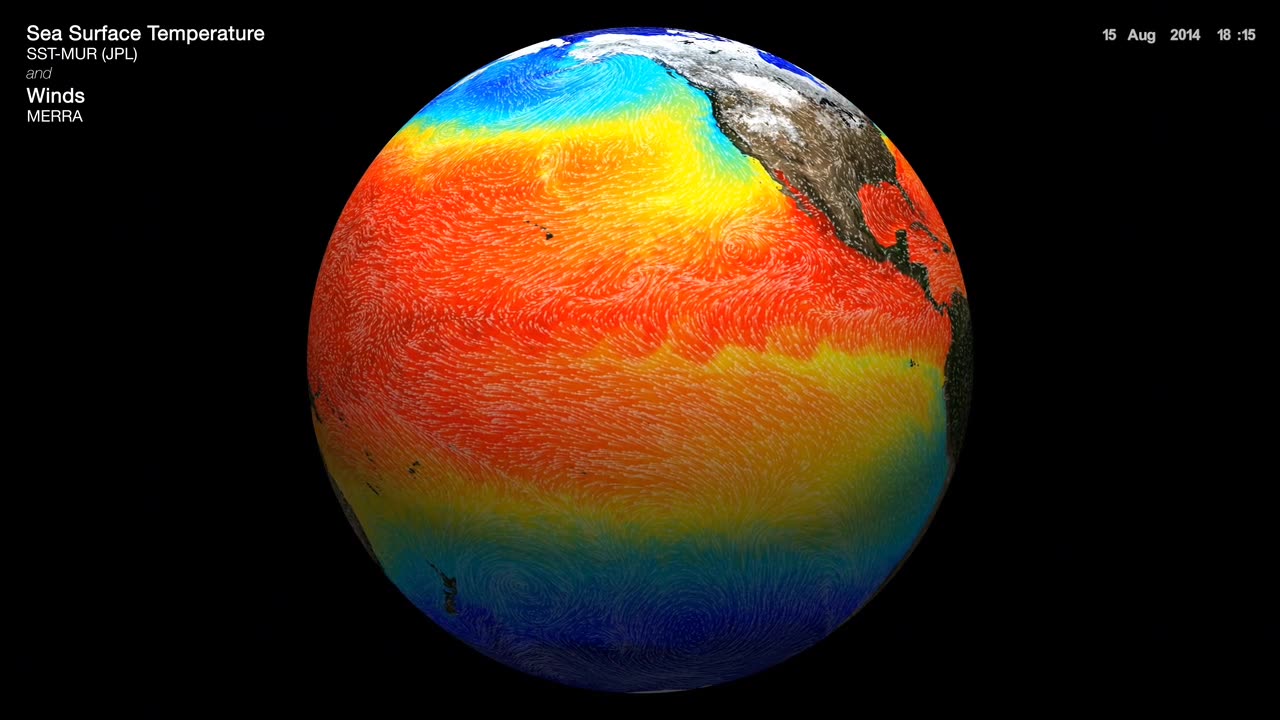Premium Only Content

Earth: A System of Systems (updated)। NASA
In order to study the Earth as a whole system and understand how it is changing, NASA develops and supports a large number of Earth-observing missions. These missions provide Earth science researchers the necessary data to address key questions about global climate change.
This visualization reveals that the Earth system, like the human body, comprises diverse components that interact in complex ways. Shown first, the Multi-Scale Ultra-High Resolution (MUR) sea surface temperature (SST) dataset combines data from the Advanced Very High-Resolution Radiometer (AVHRR), Moderate Imaging Spectroradiometer (MODIS) Terra and Aqua, and Advanced Microwave Spectroradiometer-EOS (AMSR-E) instruments. Constantly released into the Earth’s atmosphere, heat and moisture from the ocean and land influence Earth’s weather patterns—represented here as wind speeds from the Modern-Era Retrospective analysis for Research and Applications (MERRA) dataset. Moisture in the atmosphere—represented as water vapor (also from MERRA)—forms clouds (shown here using cloud layer data from the NOAA Climate Prediction Center) and precipitation. Precipitation (data from GPM IMERG) significantly impacts water availability, which influences soil moisture (data from NASA-USDA-FA) and ocean salinity.
While scientists learn a great deal from studying each of these components individually, improved observational and computational capabilities increasingly allow them to study the interactions between these interrelated geophysical and biological parameters, leading to unprecedented insight into how the Earth system works—and how it might change in the future.
-
 LIVE
LIVE
Graham Allen
37 minutes agoCandace Owens BACKS DOWN?! It’s Time To Burn All Of This Insanity To The Ground…..
8,528 watching -
 LIVE
LIVE
Wendy Bell Radio
4 hours agoRobbing America Blind
1,809 watching -
 LIVE
LIVE
Chad Prather
14 hours agoHow To Be Used By God By Mastering Patience!
5,469 watching -
 LIVE
LIVE
LFA TV
10 hours agoLIVE & BREAKING NEWS! | FRIDAY 12/05/25
3,535 watching -
 LIVE
LIVE
Game On!
16 hours ago $2.28 earnedHAPPY FOOTBALL FRIDAY! NFL Week 14 Betting Preview!
529 watching -
 1:05:41
1:05:41
Crypto Power Hour
11 hours ago $5.79 earnedBlockchain Solutions w/ U.S. Healthcare Featuring Solum Global
39.5K9 -
 1:18:24
1:18:24
The Illusion of Consensus
1 month ago“Your Math Is WRONG” - Mark Cuban GRILLED Over His NBA COVID Vaccine Mandate | Part 2
11.1K12 -
 14:17
14:17
RTT: Guns & Gear
17 hours ago $2.33 earnedBest Budget RMR Red Dot 2025? Gideon Optics Granite Review
15.8K3 -

BEK TV
23 hours agoTrent Loos in the Morning - 12/05/2025
12.6K -
 LIVE
LIVE
The Bubba Army
22 hours agoWill Michael Jordan TAKE DOWN NASCAR - Bubba the Love Sponge® Show | 12/05/25
1,273 watching